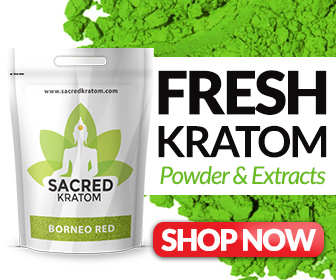If you are one of those unfortunate persons who was prescribed opiates like Vicodin, oxycodone, hydrocodone after suffering from severe injuries in an accident to your back and many fractures, you must be aware of the high dependency that comes with the use of opiates. Even after you got better and tapered off the dose of opiates, you still feel an urge to take opiates to calm your nerves and ease you. You must know that you are experiencing the withdrawal symptoms associated with Opiate intake. It’s time you get rid of these withdrawal symptoms and live a peaceful life. Yes, you can use Kratom to get rid of these symptoms, but a combination of Gabapentin and Kratom works the best.
What is Gabapentin?
 Neurontin or its generic form Gabapentin is being tested all around the world for the treatment of withdrawal symptoms associated with Opiate addiction. Though not approved by FDA, it is an effective treatment for opiate withdrawal. This drug is also used for the treatment of postherpetic neuralgia, neuropathic pain, and restless leg syndrome. However, its primary use is as an off- label prescription to help manage discontinuation symptoms of Opiate addiction, and numerous anecdotal accounts of patients claim that gabapentin was of substantial value throughout the drug withdrawal process.
Neurontin or its generic form Gabapentin is being tested all around the world for the treatment of withdrawal symptoms associated with Opiate addiction. Though not approved by FDA, it is an effective treatment for opiate withdrawal. This drug is also used for the treatment of postherpetic neuralgia, neuropathic pain, and restless leg syndrome. However, its primary use is as an off- label prescription to help manage discontinuation symptoms of Opiate addiction, and numerous anecdotal accounts of patients claim that gabapentin was of substantial value throughout the drug withdrawal process.
Gabapentin mechanism of action
The complete pharmacodynamics of Gabapentin is still unknown to us yet researchers have deduced through numerous experiments that it primarily works by blocking the voltage-gated calcium channels at alpha 2 delta subunits. It up-regulates the synthesis of GABA. It also targets NMDA receptors, protein kinase C and GABA-B receptors.
Gabapentin has the highest affinity for alpha 2 delta subunit followed by alpha 2 delta 2 subunit of the voltage-gated calcium channel. These channels regulate the Calcium influx regarding membrane depolarization of the neurons. Dysregulation of these channels results in ataxia, migraine, epilepsy and neuropathic pain.
It alleviates the opiate withdrawal symptoms by increasing the amount of gabapentin in the nervous system. Deficiency of GABA results in anxiety and stress. Increasing levels of GABA help in the management of symptoms of withdrawal such as pain, convulsions, anxiety and muscle tension.
 How do Gabapentin and Kratom help in opiate withdrawal?
How do Gabapentin and Kratom help in opiate withdrawal?
Kratom helps with opiate withdrawal as it combines with the opiate receptors and aids in relieving anxiety and pain. It attaches to the kappa, delta and mu receptors of the brain and reduces the severity of the debilitating symptoms of opiate withdrawal.
Kratom itself isn’t an opiate. It is a partial agonist at supraspinal mu and delta receptors. It interacts with the opioid receptors, but it has an advantage over opiates as it doesn’t produce long-term dependency. It soothes the receptors and brings them back to the natural state.
It also assists in returning the appetite to normal. It helps in reduction of insomnia and pain associated with withdrawal. Also, it uplifts mood and acts as an anxiolytic. With the right dose, it also helps in relieving symptoms like nausea and vomiting.
As far as Gabapentin is concerned, it helps in reducing opiate detoxification symptoms. One of the symptoms that you face during the withdrawal period is that you are agitated. This feeling makes you restless and nervous.
Gabapentin reduces agitation by increasing the inhibitory neurotransmission. It also helps in mitigation of anger episodes that occur during opiate withdrawal. It alleviates anxiety as it reduces excitatory neurotransmission and promotes sedation.
Gabapentin helps in reducing the cravings for opiates that occur in the later stages of withdrawal. It reduces depression levels and helps in the removal of stress.
It acts on the thermoregulatory action of the brain to reduce body temperature (Fever occurs during opiate withdrawal). Based on various findings it also helps with a headache and insomnia.
With opiate intake, the opioid receptors in the brain are upregulated, and thus tolerance develops. This impairs the body’s ability to release endorphins and enkephalins, the neurotransmitters that cause analgesia
This sets the stage for increased pain sensitivity during opiate detoxification. Gabapentin helps in such cases by increasing pain threshold and treating neuropathic pain. It also helps in reducing muscle spasms associated with the withdrawal of drugs. Also, it helps in attenuating tremors.
Together with Kratom, Gabapentin reduces the opiate withdrawal symptoms.
Benefits of using Gabapentin for opiate withdrawal
- Attenuates the severity of discontinuation symptoms.
- Adjunct efficacy: It doesn’t cause potentially dangerous interaction with drugs like buprenorphine, clonidine, methadone, tramadol and naltrexone, in fact, it synergises them.
- Treats co-morbid conditions like rebound pain, restless leg syndrome, anxiety, and migraine.
- It has low abuse potential
- Affordable price: A plus point for those with minimalistic or poor health insurance.
- Slow tolerance onset as compared to other drugs that are used for alleviating withdrawal symptoms.
- Few contraindications: Only contraindicated in renal failure, hypersensitivity, and pregnancy. Since it is not extensively metabolized by the liver so it is not contraindicated in hepatic disorders.
- Fewer side effects, which are managed by readjustment of the dosage.
 Drawbacks of using Gabapentin for opiate withdrawal
Drawbacks of using Gabapentin for opiate withdrawal
- A small percentage of users may suffer from depression, renal toxicity, slurred speech and suicidal thoughts.
- Some people may use it for recreational purposes so there is a certain amount of abuse potential associated with it.
- Deterioration of performance may result.
- Impaired motor skills.
- May cause intoxication.
- Long term neurophysical effects if taken for years.
- Rare side effects like blurred vision, ataxia, edema, sexual dysfunction, fatigue, and xerostomia.
 Gabapentin dosage for opiate withdrawal symptoms
Gabapentin dosage for opiate withdrawal symptoms
According to users on online forums, the dosage is somewhere between 800 to 1200mg, but then again it varies patient to patient. As a rule of thumb, you should always start with a small amount of Gabapentin and then slowly increased to find the dose which gives you the desired effects.










This is great! I have been using gabapentin co-administered with kratom for years. I use it as a benzo replacement. Im actually back in the MAT program on methadone and was dependant on benzos as i entered the program. It is hell getting the clinic to allow my benzo use because of the potential dangers with the interactions weighing CNS depression/respiratory and potentiating others using cyp450. So i literally found almost a full script of gabapentin and successfully switched from my benzos to gabapentin. The problem is getting a script for them.
I tried to see if my doc at the methadone clinic would prescribe em to me to get off benzos, and instead, he offered to write me a referral for Klonopin lol. I got booted from that clinic before getting a Klonopin, thanks for gabapentin.
Also, i was reading somewhere that phenibut is a lot like gabapentin on how they work, and what they do. Any thoughts?